Porcine Respiratory and Reproductive Syndrome … better known as PRRS … has changed the way farmers raise hogs, and attendees of the Boehringer Ingelheim Vetmedica, Inc. (BIVI) seminars at the recent World Pork Expo were able to hear how biosecurity, vaccination and tracking of PRRS are keys to controlling the disease.
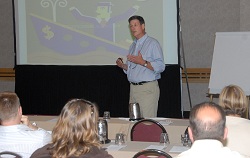 At the session I was able to attend, Dr. John Waddell of the Sutton Veterinary Clinic in Sutton, Nebraska, told the group that biosecurity needed to be addressed on a daily basis.
At the session I was able to attend, Dr. John Waddell of the Sutton Veterinary Clinic in Sutton, Nebraska, told the group that biosecurity needed to be addressed on a daily basis.
“You’ve got your risks of direct introduction, and you’ve got lots of ways you can indirectly introduce virus or disease into a herd.” He said you have to believe that you can track the disease and then use discipline and accountability to keep from introducing disease into swine herds. Dr. John Waddell Interview
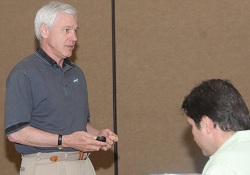 Dr. Michael Murtaugh, a noted professor of Veterinary and Biomedical Sciences at the University of Minnesota explained to the people attending the session there are certain indirect benefits to vaccinating a swine herd.
Dr. Michael Murtaugh, a noted professor of Veterinary and Biomedical Sciences at the University of Minnesota explained to the people attending the session there are certain indirect benefits to vaccinating a swine herd.
“Vaccination can reduce the amount of PRRS virus in an area, which would reduce the risks of infection.” And mass vaccinations can help drive out a variety of PRRS viruses. With fewer overall viruses, the better the chances of overall PRRS control. But Murtaugh also cautioned the audience that there are limited diagnostic capabilities. “You need to understand the strengths and limitations of your tools to use them the best way possible.” Dr. Michael Murtaugh
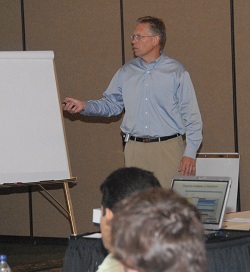 One tool is producers’ arsenals is a system actually developed by Boehringer Ingelheim and donated to veterinarians called PADRAP … Production Animal Disease Risk Assessment Program, an online risk assessment. Dr. Derald Holtkamp, an assistant professor at Iowa State University, explained vets have been able to use PADRAP as a communication tool to ensure a coordinated approach to controlling PRRS is used.
One tool is producers’ arsenals is a system actually developed by Boehringer Ingelheim and donated to veterinarians called PADRAP … Production Animal Disease Risk Assessment Program, an online risk assessment. Dr. Derald Holtkamp, an assistant professor at Iowa State University, explained vets have been able to use PADRAP as a communication tool to ensure a coordinated approach to controlling PRRS is used.
“A number of these things veterinarians have been talking to their clients about for years. But what PADRAP does is give them a more systematic way to do it.” Holtkamp said PADRAP also helps producers decide what method they need to use to eliminate PRRS in their herds.
Dr. John Waddell interview wpx10-bi-holtkamp.mp3
All three agree that PRRS has changed the way swine production and biosecurity is handled, and it is a costly disease. “But I think we’re going to win this battle,” said Waddell.
World Pork Expo 2010 Photo Album
AgWired coverage of the World Pork Expo 2010 is sponsored by:
 and
and  .
.

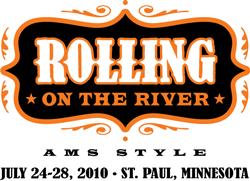
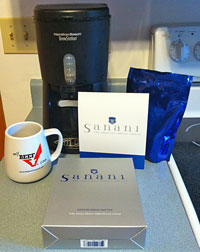
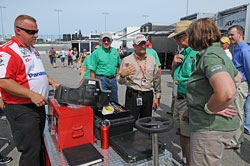 One of the cool things to do at an Indy race is tour the garages where the technicians work on the engines in preparation of race day. The
One of the cool things to do at an Indy race is tour the garages where the technicians work on the engines in preparation of race day. The 
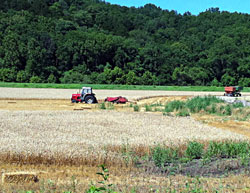
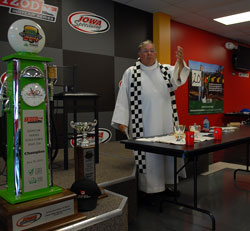 On Father’s Day I really enjoyed myself working at the Iowa Corn Indy 250 in Newton, IA as you know. It was Sunday and traveling with the “moving city” are several ministers and a priest.
On Father’s Day I really enjoyed myself working at the Iowa Corn Indy 250 in Newton, IA as you know. It was Sunday and traveling with the “moving city” are several ministers and a priest.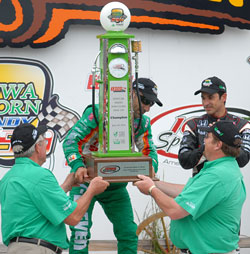 The President of the
The President of the